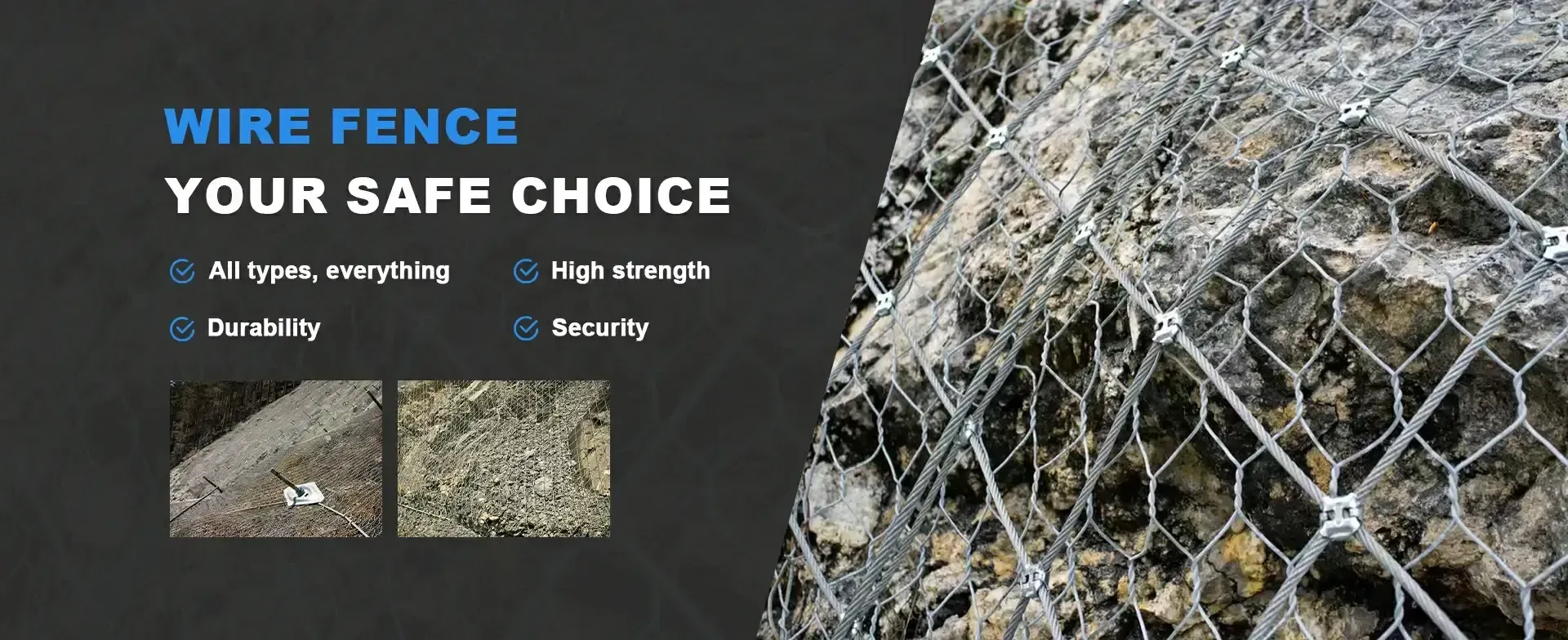දෙසැ. . 14, 2024 15:48 Back to list
small gabion cages factory
Understanding Small Gabion Cages The Ideal Solution for Landscaping and Erosion Control
In recent years, the demand for sustainable and eco-friendly construction solutions has surged. Among these solutions, small gabion cages have garnered significant attention for their versatility and effectiveness. These structures, which are essentially wire mesh cages filled with stones or other materials, not only serve functional purposes but also enhance the aesthetic appeal of outdoor spaces. This article explores the benefits, applications, and manufacturing aspects of small gabion cages, emphasizing why they are an excellent choice for landscaping and erosion control.
What Are Small Gabion Cages?
Gabion cages are traditionally large structures used in civil engineering for controlling erosion, managing stormwater, and providing stability to embankments. However, smaller versions of these cages have emerged as practical solutions for residential and light commercial projects. Typically measuring around 1 meter in width and 1 meter in height, small gabion cages are easy to handle and can be used for various applications.
Benefits of Small Gabion Cages
1. Erosion Control One of the primary uses of gabion cages is for erosion control. They can be placed along riverbanks, hillsides, or any vulnerable area to absorb the impact of water flow. By doing so, they help prevent soil erosion and maintain the integrity of the surrounding environment.
2. Versatile Aesthetics Small gabion cages can be customized to blend with various landscapes. They can be filled with a variety of materials such as rocks, pebbles, and even recycled materials, allowing for creative designs that enhance visual appeal. Gardeners and landscapers can use them to create attractive retaining walls, planters, or decorative features.
3. Stability and Strength Made from durable wire mesh with high tensile strength, gabion cages provide excellent stability. When filled with suitable materials, they create a robust structure that can withstand forces from water, earth, and other environmental factors.
small gabion cages factory

4. Sustainability Using local materials to fill gabions promotes sustainability. Not only does this reduce transportation costs and carbon footprints, but it also supports the local economy by utilizing materials available in the area.
5. Easy Installation and Maintenance Small gabion cages are relatively easy to install. They require little more than a solid foundation and can be set up with minimal tools. Furthermore, they require minimal maintenance – an occasional check to ensure the fill material remains intact is often sufficient.
Applications of Small Gabion Cages
The applications for small gabion cages are numerous. Gardeners use them to create raised garden beds or as decorative elements in flower beds. They are also popular in landscaping projects for creating pathways or borders. In addition, small gabions can be employed in sustainable urban drainage systems (SUDS) to manage rainwater runoff, promoting better drainage and reducing flooding risk.
Manufacturing Small Gabion Cages
The manufacturing of small gabion cages involves several steps, from selecting appropriate wire materials to ensuring effective mesh construction. Manufacturers typically use corrosion-resistant steel wire to enhance durability. The wire is then woven into a mesh pattern, allowing for flexibility while maintaining structural integrity. Once completed, these cages can be easily transported to construction sites or sold to individual consumers.
In summary, small gabion cages represent a practical and stylish option for anyone looking to enhance their outdoor space while addressing environmental concerns. With their myriad benefits, diverse applications, and ease of installation, they are becoming increasingly popular among homeowners and landscapers alike. Whether used for erosion control, decorative landscaping, or effective drainage solutions, small gabion cages are a fantastic choice in today’s environmentally conscious world.
-
Visualizing Gabion 3D Integration in Urban Landscapes with Rendering
NewsJul.23,2025
-
The Design and Sustainability of Gabion Wire Mesh Panels
NewsJul.23,2025
-
The Acoustic Performance of Gabion Sound Barriers in Urban Environments
NewsJul.23,2025
-
Mastering the Installation of Galvanized Gabion Structures
NewsJul.23,2025
-
Gabion Boxes: Pioneering Sustainable Infrastructure Across the Globe
NewsJul.23,2025
-
Custom PVC Coated Gabion Boxes for Aesthetic Excellence
NewsJul.23,2025
-
Installation Tips for Gabion Wire Baskets in Erosion Control Projects
NewsJul.21,2025






